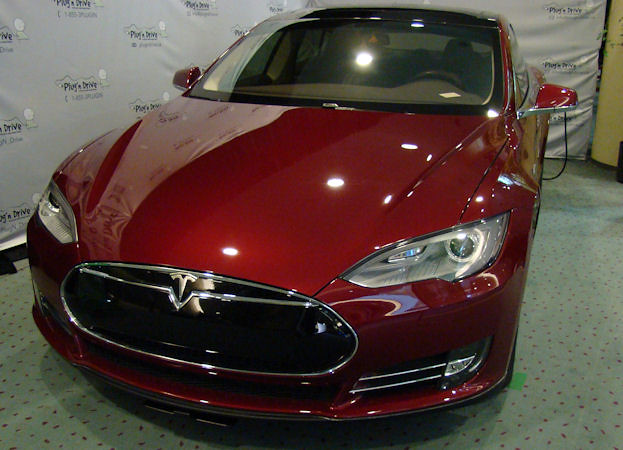 |
| Photo Credit: Chris Nagy |
Today, Tesla Motors officially declared an action transpired in regards to autonomous and self-driving that many have feared as well as expected to happen. In a company blog posting, Tesla Motors announced their company was contacted by the United States NHTSA (National Highway Traffic Safety Administration) as a preliminary investigation has been opened into the self-driving Autopilot program installed on a Tesla Model S involved in a crash resulting in a death.
A fatal accident where an activated Autopilot system is suspect for being a leading factor, a male occupant of a Tesla Model S sedan died when the vehicle collided with the trailer of a transport truck. The explanation of the crash seems to indicate the limitations of this certain self-driving aid technology in detecting white objects in high light conditions. According to the blog account, the tractor trailer was perpendicular to the Model S where the all-electric vehicle drove under the bottom of the trailer.
Tesla Motors expressed sadness and sympathies towards the person as well as his family, the auto company. However, while acknowledging the accident and the evaluation of their Autopilot system, Tesla Motors has also included clarity and defense of the self-driving assist technology. Citing the Autopilot's record of completing 130 million miles of collective operations among Tesla vehicles, the automaker draws attention to statistics that a fatality on average occurs on American roadways every 94 million miles. Tesla does mention their Autopilot technology is still in the beta phase. Suggesting the software is improving as its continues to operate in real-worth cases, Tesla clearly makes its clear their Autopilot function is an assist feature and requires full driver attention when in use.
The organization Consumer Watchdog quickly reacted to the news as it was posted on the Tesla blog. "We hope this is a wake-up call to federal regulators that we still don't know enough about the safety of self-driving cars to be rushing them to the road. The Administration should slow its rush to write guidelines until the causes in this crash are clear, and the manufacturers provide public evidence that self-driving cars are safe." said the group's executive director Carmen Balber in a press release. Consumer Watchdog has been a vocal critic to the quick-moving development of autonomous and self-driving technology. In April, Consumer Watchdog issued a release calling for the NHTSA to reject Google's approval process for self-driving vehicles. A previous press release implored the regulator to ask Google 10 questions related to the execution of their self-driving cars. While several of the questions look for answers to legitimate concerns about the function of the self-driving software as well as privacy, Consumer Watchdog has also conveyed displeasure in what the organization has defined as a fast-track approval process. Part of question 9 read as follows: "NHTSA's performance standards are actually designed to promote new life-saving technology. Why is Google trying to circumvent them?"
It's inevitable this fatality with self-driving technology will result in the proliferation of ongoing debates on the future of this autonomous control on the road. Expect those discussion to take place in the days and weeks to come. Share value of Tesla Motors shares have dropped to as much as $6.03 in after hours trading in the wake of the evaluation by the NHTSA,

Comments
Post a Comment